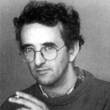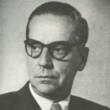The Lazarus Project
(Libby/OverDrive eAudiobook)
Available Platforms
Description
More Details
Similar Titles From NoveList
Similar Authors From NoveList
Published Reviews
Booklist Review
*Starred Review* Lazarus Averbuch, a recent immigrant and survivor of the infamous Kishinev pogrom, tries to see Chicago's chief of police early on March 2, 1908, but he is shot to death before he can state his mission. The powers-that-be finger the undernourished young Jew as an anarchist and harass his seamstress sister, Olga, as part of a brutal cover-up. So begins MacArthur fellow Hemon's third and most galvanizing work of fiction. The basic story of Lazarus' murder is true, and Hemon tells it with vigor and outrage, covertly paralleling early-twentieth-century anti-Semitic hysteria over anarchists with early-twenty-first-century stereotyping of Islamic terrorists. Powerful stuff, and yet just one facet of a remarkably trenchant novel. Vladimir Brik, a struggling Bosnian writer living in present-day Chicago, decides to write about Lazarus and embarks on a grant-funded research expedition with photographer Rora. The two endure ludicrous, risky, and wrenching adventures in long-tyrannized Moldova and Sarajevo, and Hemon, a gloves-off heir to Nabokov, riffs audaciously on the biblical Lazarus, venomously condemns gangsterdom, and praises those who hold on to their humanity in the maelstrom of genocide. Charged with fury and empathy, Hemon's sentences seethe and hiss, their dangerous beauty matched by Velibor Bozovic's eloquent black-and-white photographs, creating an excoriating novel of rare moral clarity.--Seaman, Donna Copyright 2008 Booklist
Publisher's Weekly Review
MacArthur genius Hemon in his third book (after Nowhere Man) intelligently unpacks 100 years' worth of immigrant disillusion, displacement and desperation. As fears of the anarchist movement roil 1908 Chicago, the chief of police guns down Lazarus Averbuch, an eastern European immigrant Jew who showed up at the chief's doorstep to deliver a note. Almost a century later, Bosnian-American writer Vladimir Brik secures a coveted grant and begins working on a book about Lazarus; his research takes him and fellow Bosnian Rora, a fast-talking photographer whose photos appear throughout the novel, on a twisted tour of eastern Europe (there are brothel-hotels, bouts of violence, gallons of coffee and many fabulist stories from Rora) that ends up being more a journey into their own pasts than a fact-finding mission. Sharing equal narrative duty is the story of Olga Averbuch, Lazarus's sister, who, hounded by the police and the press (the Tribune reporter is especially vile), is faced with another shock: the disappearance of her brother's body from his potter's grave. (His name, after all, was Lazarus.) Hemon's workmanlike prose underscores his piercing wit, and between the murders that bookend the novel, there's pathos and outrage enough to chip away at even the hardest of hearts. (May) (c) Copyright PWxyz, LLC. All rights reserved
Library Journal Review
Hemon resurrects Lazarus Averbuch, an Eastern European Jew shot to death by Chicago's chief of police while attempting to give him a letter, by telling the story of a contemporary Eastern European immigrant fascinated with Averbuch. With a five-city tour and reading group guide. (c) Copyright 2010. Library Journals LLC, a wholly owned subsidiary of Media Source, Inc. No redistribution permitted.
Kirkus Book Review
A profoundly moving novel that finds striking parallels between the America of a hundred years ago and now, as an immigrant Bosnian author, straining to come to terms with his identity, returns to his troubled homeland. The second novel by Hemon (Nowhere Man, 2002) begins in the Chicago of 1908, when a 19-year-old Jewish refugee named Lazarus Averbuch undertakes a mysterious mission to deliver a letter to the city's chief of police. He has made the trek from his impoverished ghetto home to one of the city's richest neighborhoods and is plainly out of his element. When he attempts to deliver the letter, the chief shoots him, fearing that the stranger is an armed anarchist. A reporter who serves as a mouthpiece for the police spreads the word that the murdered immigrant was actually a murderer, killed in an attempt to assassinate the chief. A hundred years later, the incident piques the interest of Vladimir Brik, a struggling writer whose column for the city's alternative weekly has given him a readership but not much of a career, and who relies on the financial support of his wife, an American brain surgeon. Occasionally mistaken for being either Jewish or Muslim--though he is neither--Brik sees the demonizing of Lazarus in a contemporary light: "The war against anarchism was much like the current war on terror--funny how old habits never die." Chapters alternate between Brik's account of the events of 1908 and his current research into the truth about Lazarus, a mission that takes him back to Eastern Europe on an extended journey, accompanied by an amoral former war photographer named Rora. Yet as the novel progresses, it seems that Brik is more concerned with finding the truth about himself--Who am I? Where is home?--than he is with the perhaps impossible task of learning what really happened with Lazarus. A literary page-turner that combines narrative momentum with meditations on identity and mortality. Copyright ©Kirkus Reviews, used with permission.
Booklist Reviews
*Starred Review* Lazarus Averbuch, a recent immigrant and survivor of the infamous Kishinev pogrom, tries to see Chicago's chief of police early on March 2, 1908, but he is shot to death before he can state his mission. The powers-that-be finger the undernourished young Jew as an anarchist and harass his seamstress sister, Olga, as part of a brutal cover-up. So begins MacArthur fellow Hemon's third and most galvanizing work of fiction. The basic story of Lazarus' murder is true, and Hemon tells it with vigor and outrage, covertly paralleling early-twentieth-century anti-Semitic hysteria over anarchists with early-twenty-first-century stereotyping of Islamic terrorists. Powerful stuff, and yet just one facet of a remarkably trenchant novel. Vladimir Brik, a struggling Bosnian writer living in present-day Chicago, decides to write about Lazarus and embarks on a grant-funded research expedition with photographer Rora. The two endure ludicrous, risky, and wrenching adventures in long-tyrannized Moldova and Sarajevo, and Hemon, a gloves-off heir to Nabokov, riffs audaciously on the biblical Lazarus, venomously condemns gangsterdom, and praises those who hold on to their humanity in the maelstrom of genocide. Charged with fury and empathy, Hemon's sentences seethe and hiss, their dangerous beauty matched by Velibor Bozovic's eloquent black-and-white photographs, creating an excoriating novel of rare moral clarity. Copyright 2008 Booklist Reviews.
Library Journal Reviews
Hemon resurrects Lazarus Averbuch, an Eastern European Jew shot to death by Chicago's chief of police while attempting to give him a letter, by telling the story of a contemporary Eastern European immigrant fascinated with Averbuch. With a five-city tour and reading group guide. Copyright 2008 Reed Business Information.
Library Journal Reviews
After two short story collections (The Question of Bruno; Nowhere Man ), MacArthur Award recipient Hemon brings us a novel worth reading with as much fire as its composition must have demanded. The New York Times rightfully calls Hemon "not simply gifted but necessary." Reading Hemon's image-viscous prose is like anxiously wading through dark emotion. It's the story of Brik, who fled to Chicago from Sarajevo during war, married a neurosurgeon, and became a writer. Obsessed with the story of Lazarus Averbuch—an Eastern European immigrant who was murdered in 1908 in Chicago, five years after escaping the pogroms—Brik returns with photographer friend Rora to Eastern Europe to immerse himself in his and Lazarus's old lives. Through Rora's stories of wartime Sarajevo and glimpses of Brik's life, we understand their outsider anguish in America. Also, through flashbacks of Lazarus's death, Hemon reveals the other mystery. This story could be compared with Jonathan Safran-Foer's Everything Is Illuminated in that it's one character's Eastern European search for enlightenment. Highly recommended for all public libraries. [See Prepub Alert, LJ 1/08.]—Stephen Morrow, Athens, OH
[Page 76]. Copyright 2008 Reed Business Information.Publishers Weekly Reviews
MacArthur genius Hemon in his third book (after Nowhere Man ) intelligently unpacks 100 years' worth of immigrant disillusion, displacement and desperation. As fears of the anarchist movement roil 1908 Chicago, the chief of police guns down Lazarus Averbuch, an eastern European immigrant Jew who showed up at the chief's doorstep to deliver a note. Almost a century later, Bosnian-American writer Vladimir Brik secures a coveted grant and begins working on a book about Lazarus; his research takes him and fellow Bosnian Rora, a fast-talking photographer whose photos appear throughout the novel, on a twisted tour of eastern Europe (there are brothel-hotels, bouts of violence, gallons of coffee and many fabulist stories from Rora) that ends up being more a journey into their own pasts than a fact-finding mission. Sharing equal narrative duty is the story of Olga Averbuch, Lazarus's sister, who, hounded by the police and the press (the Tribune reporter is especially vile), is faced with another shock: the disappearance of her brother's body from his potter's grave. (His name, after all, was Lazarus.) Hemon's workmanlike prose underscores his piercing wit, and between the murders that bookend the novel, there's pathos and outrage enough to chip away at even the hardest of hearts. (May)
[Page 53]. Copyright 2008 Reed Business Information.Reviews from GoodReads
Citations
Hemon, A., & Mays, J. (2009). The Lazarus Project (Unabridged). Recorded Books, Inc..
Chicago / Turabian - Author Date Citation, 17th Edition (style guide)Hemon, Aleksandar and Jefferson Mays. 2009. The Lazarus Project. Recorded Books, Inc.
Chicago / Turabian - Humanities (Notes and Bibliography) Citation, 17th Edition (style guide)Hemon, Aleksandar and Jefferson Mays. The Lazarus Project Recorded Books, Inc, 2009.
Harvard Citation (style guide)Hemon, A. and Mays, J. (2009). The lazarus project. Unabridged Recorded Books, Inc.
MLA Citation, 9th Edition (style guide)Hemon, Aleksandar, and Jefferson Mays. The Lazarus Project Unabridged, Recorded Books, Inc., 2009.
Copy Details
| Collection | Owned | Available | Number of Holds |
|---|---|---|---|
| Libby | 1 | 1 | 0 |
































